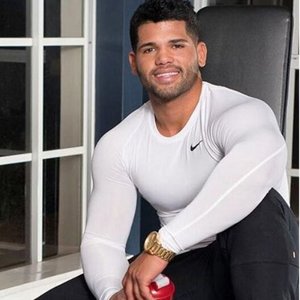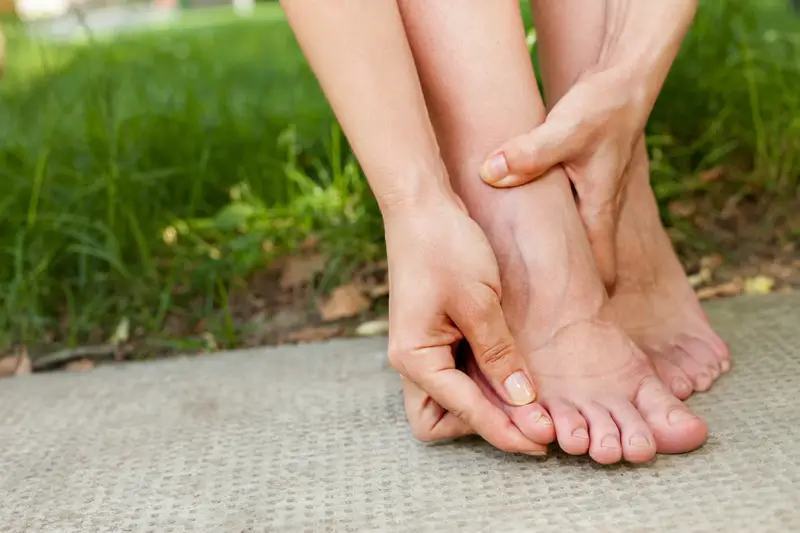Is there anything in life as terrible as a blistered pinky toe? A painful pinky toe can be torturous. You’re on your feet every day, so taking good care of your toes is vital to ensuring that you’re not breathing out agony with every step you take.
If your shoe keeps on rubbing against your little toe, it’ll quickly become irritated, and you’ll soon feel as if you were walking on a bed of knives. Worry not; we’ve compiled the most common issues and solutions to give your little toe beans a bit of rest.
How Do I Prevent My Shoes to Rub Against My Toes?
To prevent your shoes rubbing against your toes, wear socks or using toe protectors and toe caps. You can also apply paper tape or insert shoe insoles, but most people fix this problem by finding shoes that are wide fit.
Get proper fit with insoles: The right insoles will lift your foot and reduce the surface area of contact with the back of your heel. They also provide a slightly tighter fit and are designed to reduce the risk of blisters.
If your shoes are new and have not yet fit properly, then custom insoles can help! Not only will they reduce friction, but they will also make them more supportive.
Wear 2 socks: Wearing socks over a pair of thin nylons will reduce friction on the skin of your heel.
Moleskin: This fabric is commonly used to apply moleskin to the heel of shoes. It’s a durable and easy-to-use cotton fabric.
Visit shoe repair shop: If you prefer to have your shoes repaired by a professional, then visit a shoe repair shop. They can also help you get your shoes stretched.
Use heat: Heat your socks and your shoes to soften the back of them. Once the material has warmed, use a hairdryer to keep the shoes soft and pliable. This product is best used with leather, suede, or cloth shoes. Be careful not to over-heat or melt your shoes.
Duct tape: Protect your feet from the harsh weather with duct tape.
Why is My Shoes Rubbing Against My Toes?
The most common cause of a blistered and irritated pinky toe is an ill-fitting shoe. It seems almost too simple to mention, but in reality, we pay a lot less attention to our shoe sizes than we probably should. Even if your shoes may seem to be the right size based on their number, the actual shape and brand of the shoe are important to consider as well.
The human foot naturally is designed to become wider near the front, yet many less-comfortable shoe brands have a more narrow front. The shoelace plays into it as well; you don’t want too loose of a lace so that it falls apart, but you should also stay away from shoes with too tight of a lace. A shoe that would otherwise be ideal for you may end up hurting your toe because you’re tightening them too little or too much.
When buying shoes, make sure to consider not just the size number, but also their shape and material; we recommend buying shoes that have a wider front and experimenting with how they feel at various levels of tightness.
That said, maybe your shoe feels perfect, yet you’re still getting blistered. Or, perhaps you simply don’t have the money to buy the most comfortable shoes. You’re stuck with some too-tight shoes that seem intent on ruining your day; what do you do then?
How to Stretch Shoes to Avoid Blisters
One simple and free solution you can try is just to stretch the shoe out a bit. A shoe that feels too tight might just be one that hasn’t been broken in yet. Walk around for a while to stretch them out, and get them used to the shape of your foot. This can be quickened by wearing thicker socks, though you might save that one till after the summer heat.
If you have a steamer, you can try steaming the inside of your shoe to widen it and make it more likely to stretch. Just be careful; steaming the outside too much could ruin the shoe and its appearance.
Don’t have a steamer, or don’t trust yourself with a steamer? Use water! Place bags of water into your shoe, and then put it in your freezer for three or four hours.
As the water freezes, it will expand and stretch out the shoe as a result. You can also soak the shoes directly in water—-enough to wet the exterior, but not enough for water to seep inside. If you immediately wear them while they’re wet, they’ll conform to your feet more easily. Maybe not the most comfortable solution, but, hey, we’re looking for results here.
If those seem a little too far-fetched or unreliable for you, you can always buy a shoe stretching kit. These kits can be fairly pricey, but they come with the bonus of being made to help stretch your shoe and thus might give more consistent results.
Each kit typically comes with a shoe-stretching spray and a wedge; simply cover the shoe in the spray, then insert the wedge into the shoe. Use the knob on the wedge to push the wedge tightly against the walls of the shoe, and set it aside for a few hours. Once that time has passed, loosen the knob and try the shoes on; they should fit much better than they had when you started.
Let’s say you’ve walked miles in your shoes in the thickest socks on the market, you’ve steamed your shoes to hell and back, and you’ve exposed your shoes to every form of water that you can think of, and you’ve basically MacGyver’d your way into fixing your shoes and yet still, nothing. Stretching your shoes isn’t working; what’s next?
How to Ease Blister Pain
If your shoe is irritating your little toe after you’ve stretched it, there are products you can buy to lessen or prevent that pain. The first of these products we recommend is foot powder.
Sometimes, the main cause of the friction between your little toe and your shoe is sweat; adding foot powder into your shoe will absorb this sweat and might make for a more comfortable experience.
Another way to lessen this friction between the shoe and the toe is to use an anti-blister/anti-friction stick. These sticks look somewhat like deodorant but are made to prevent blisters and rough rubbing between your toe and shoe. Rub the stick onto your little toe; it’ll create a slippery surface that eases the friction between your shoe and toe.
You can also place anti-blister toe cushions or patches against your toe, or wrap your toe in something like a bandage. Products like these will cushion your toe to ease the contact between your foot and shoe and lower the pain.
Toe blisters are not fun, and they can easily wear you out or ruin a good day. Try out these simple steps and methods listed above and reclaim your walks from evil pain of blisters.

Austin is the author of loveatfirstfit.com and a personal trainer with extensive knowledge in nutrition. Austin is passionate about helping others to find a suitable healthy lifestyle and feel good about themselves. Austin’s goal is to help people push their limits and achieve their physical performance.

